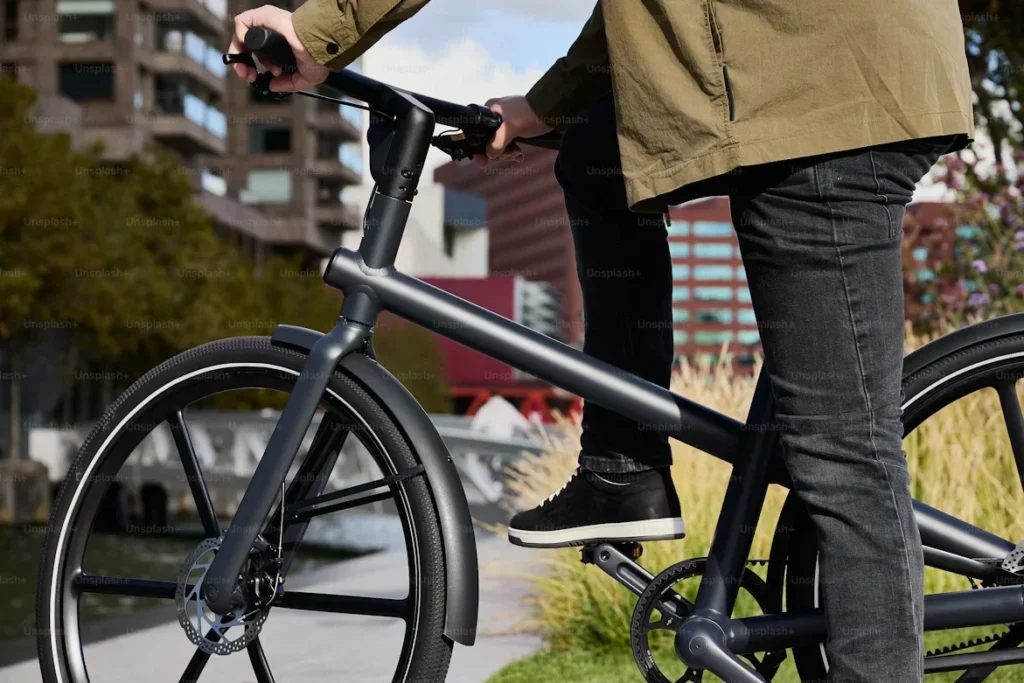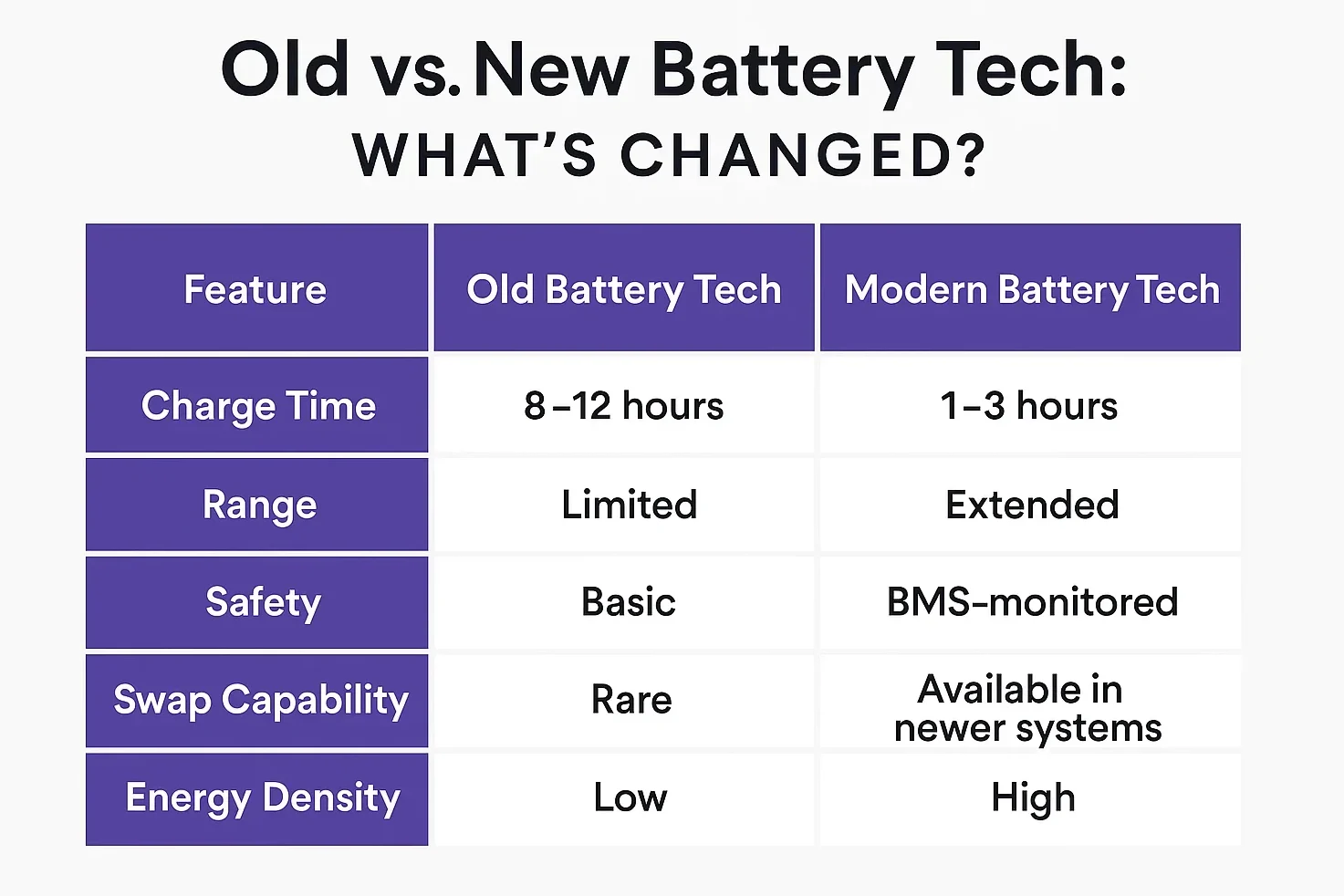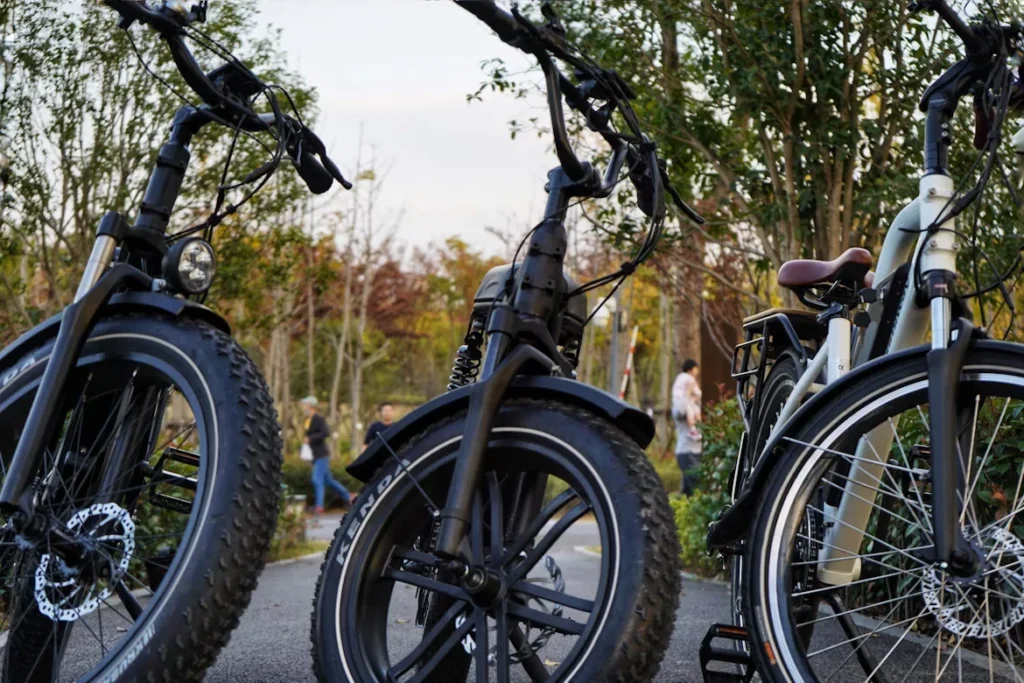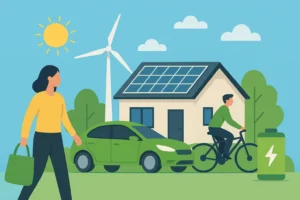Disclaimer: This article is for informational purposes only and does not constitute professional advice. While efforts have been made to make sure accuracy, readers should independently verify technical details and consult appropriate experts before making decisions related to battery-powered devices or transportation options.
Not long ago, getting around felt simple. You walked, maybe biked, or just drove. But today, how we move is being reshaped steadily, not loudly. Behind much of that change? The battery.
Whether it’s in a car, a scooter, or something smaller, better battery tech is being used to build smoother rides, more extended range, and very real freedom from the gas station. Transportation is becoming quieter, cleaner, and more efficient. Not someday, right now.
And the shift isn’t limited to city traffic or high-end electric vehicles. Many of the most noticeable changes are appearing in everyday gear things that were once powered by effort or fuel and now run on rechargeable systems designed to last.
How Two Wheels Became the Smart Way to Ride

For years, bikes remained relatively unchanged. They were used for exercise, short trips, or recreation. But with battery assistance, they’ve begun to evolve into something more.
E-bikes, especially pedal-assist models, are offering a new kind of ride. You still pedal, but a motor responds and adds just enough support. That boost doesn’t take over; it follows your lead. The ride feels smoother, and longer routes no longer feel intimidating.
Sensors are used in most of these bikes to read how fast you pedal or how much pressure you apply. Depending on your input, the system adjusts the amount of help you receive. It’s not robotic, it’s responsive. You get a ride that matches your pace, not one that replaces it.
The result is a pedal assist e-bike that feels natural, but much less tiring. And none of this would function without the battery working consistently in the background, powering every motion from start to stop.
Batteries Now Think, And That’s a Good Thing
The idea that a battery stores power is outdated. These days, they do more. Inside many systems is a battery management system, or BMS, that oversees the battery’s performance.
Charging, temperature, and output are all monitored in real time. If something’s off, adjustments are made automatically. Overheating is avoided. Overcharging is stopped. The battery is protected from itself.
For e-bikes and electric vehicles, safety matters. That’s why certifications like UL 2849 exist. They show that a battery has been tested against risks and has passed. For riders, that peace of mind matters more than they realize.
With a good BMS, longevity improves too. The battery isn’t drained too quickly or charged too often. That means it holds performance longer and needs replacement less often.
Old Battery Worries Are Fading
Not long ago, if you had a battery-powered device, you worried. About range. Charging time. Gradual decay. Now, those concerns aren’t what they used to be.
Here’s how modern battery tech compares to older systems:

Batteries built today, lithium-ion or lithium-iron phosphate, perform better. They charge faster, hold energy longer, and don’t wear out as easily. Charging that once took half a day might now take two hours.
Some systems even allow battery swaps. When one runs low, you replace it with a charged one and keep going. It’s an efficient improvement that works well for riders or travelers.
Design improvements in energy density enable the packing of more power into smaller batteries. That’s been a game-changer, especially for devices where space and weight are a concern.
Going Beyond the Commute

The role of batteries has evolved beyond simply powering devices. They’re showing up in weekend gear, outdoor tools, and camping setups.
Portable power stations are now used in cabins, vans, and tents. You can charge phones, light up your site, or even run small appliances, all with a single compact unit.
Folding e-bikes are helping people stay mobile during trips. They can be carried in a trunk and unfolded when needed. Once charged, they’re ready to explore without the need for a car.
Even small tools, such as flashlights, fans, and drills, run longer and more reliably on newer battery types. In places where fuel or outlets aren’t an option, these tools have become essential.
Where We’re Headed Next
Progress in battery technology hasn’t slowed. It’s moving steadily into new areas. Solid-state batteries, for example, are being developed as safer, faster-charging alternatives to those currently in use. Though not widely released yet, they’re being tested and refined.
Another change is how batteries are being designed. More attention is being given to making them recyclable. Some companies are developing reusable parts and greener materials to reduce long-term waste.
Charging stations, too, are becoming faster and more intelligent. Some detect what’s being plugged in and adjust output accordingly. Others are powered by solar panels, offering clean energy on the go.
More devices now run on modular battery systems. That means the same power unit can run multiple tools. You can charge one battery and use it across an e-bike, speaker, or portable fan. It simplifies your setup and reduces waste.
We’re Already Living the Change
Today’s transportation isn’t defined just by vehicles. It’s shaped by what powers them, and increasingly, that’s a battery doing more than anyone expected.
Electric bikes are a clear example of how the world has changed. They’re practical. Quiet. Strong enough for daily use and built to handle longer trips.
Better batteries aren’t just powering devices. They’re improving how people move, live, and explore. From commutes to camping, their presence is growing. And their benefits, including more extended range, safer rides, and more intelligent systems, are being felt across the board.
They’ve also made sustainable travel more realistic. No fuel. Less maintenance. Lower costs over time. These advantages are real, not theoretical.
Families are now using battery-powered trailers. Delivery services rely on e-cargo bikes. Weekend travelers pack solar stations instead of generators. These aren’t trends, they’re shifts in behavior. All of this was made possible because batteries improved quietly, then quickly.
What’s happening isn’t sudden. It’s steady. But it’s happening everywhere. And it’s only going to get better from here.












